NASA’s Kennedy Space Center in Florida remains closed as Hurricane Milton moves off the coast.
The safety of everyone impacted by the storm remains our top priority as the agency begins the assessment and recovery process from the hurricane.
Once the winds subsided to a safe level, the center’s Ride Out Team and engineering teams began initial checkouts to ensure bridges are safe and useable. Later, a larger assessment team will thoroughly check the entire center.
The agency’s Europa Clipper launch team will schedule an official launch date when teams from NASA and SpaceX are able to perform their assessments, and confirm its safe to launch. Teams are working to protect launch opportunities no earlier than Sunday, Oct. 13. Clipper has launch opportunities through Wednesday, Nov. 6.
NASA will provide more information on Clipper launch opportunities as it becomes available.
Tag: NASA
NASA, SpaceX Secure Europa Clipper Ahead of Hurricane
NASA and SpaceX are standing down from the Thursday, Oct. 10, launch attempt of the agency’s Europa Clipper mission due to anticipated hurricane conditions in the area. Hurricane Milton is expected to move from the Gulf of Mexico this week moving east to the Space Coast. High winds and heavy rain are expected in the Cape Canaveral and Merritt Island regions on Florida’s east coast. Launch teams have secured NASA’s Europa Clipper spacecraft in SpaceX’s hangar at Launch Complex 39A at the agency’s Kennedy Space Center in Florida ahead of the severe weather, and the center began hurricane preparations Sunday.
“The safety of launch team personnel is our highest priority, and all precautions will be taken to protect the Europa Clipper spacecraft,” said Tim Dunn, senior launch director at NASA’s Launch Services Program.
On Oct. 4, workers transported NASA’s Europa Clipper spacecraft from the Payload Hazardous Servicing Facility at NASA’s Kennedy Space Center to the SpaceX Falcon Heavy rocket in the hangar as part of final launch preparations ahead of its journey to Jupiter’s icy moon. While Europa Clipper’s launch period opens Oct. 10, the window provides launch opportunities until Wednesday, Nov. 6.
Once the storm passes, recovery teams will assess the safety of the spaceport before personnel return to work. Then launch teams will assess the launch processing facilities for damage from the storm.
“Once we have the ‘all-clear’ followed by facility assessment and any recovery actions, we will determine the next launch opportunity for this NASA flagship mission,” said Dunn.
NASA’s SpaceX Crew-9 News Conference at 3 p.m. EDT
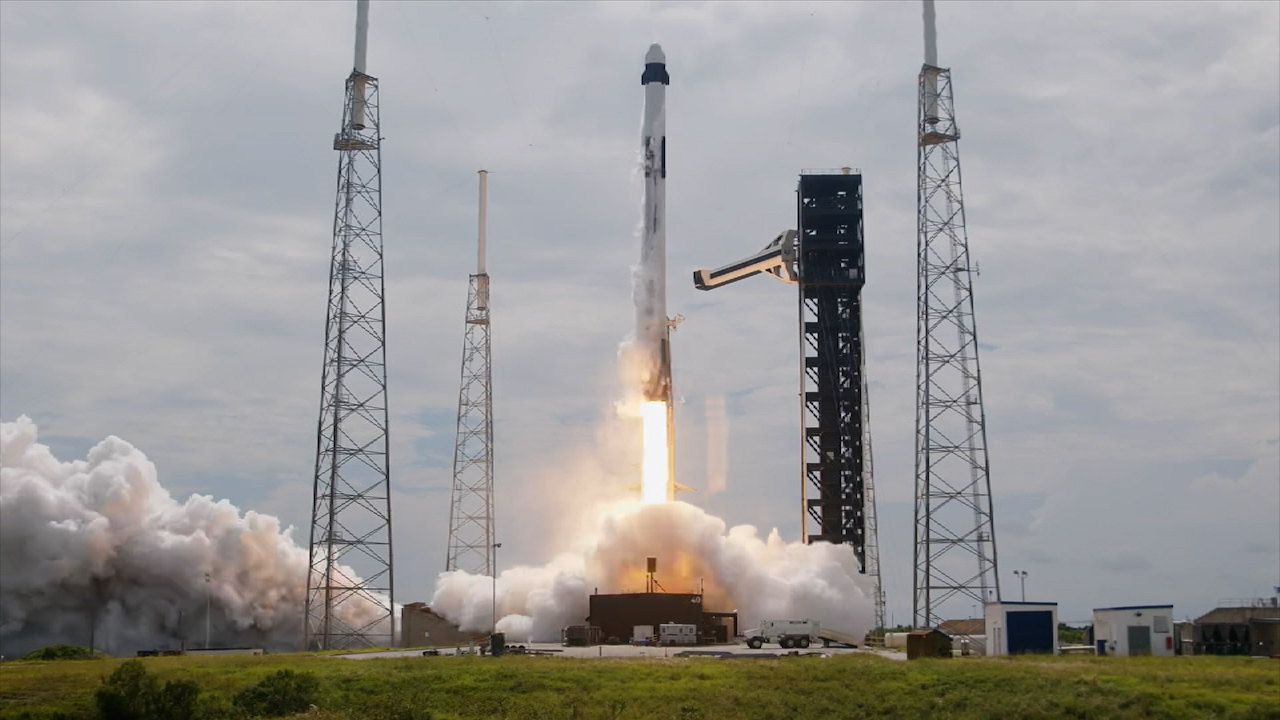
The SpaceX spacecraft carrying Crew-9 members NASA astronaut Nick Hague, commander, and Roscosmos cosmonaut Aleksandr Gorbunov, mission specialist, to the International Space Station has safely reached orbit, and the nosecone has opened.
A postlaunch news conference will be held at 3 p.m. EDT at the agency’s Kennedy Space Center in Florida with the following participants:
- NASA Deputy Administrator Pam Melroy
- Ken Bowersox, associate administrator, NASA’s Space Operations Mission Directorate
- Dana Hutcherson, deputy program manager, Commercial Crew Program, NASA Kennedy
- Dina Contella, deputy manager, International Space Station Program, NASA Johnson
- Sarah Walker, director, Dragon Mission Management, SpaceX
NASA will air the postlaunch news conference on NASA+ and the agency’s website. Learn how to stream NASA content through a variety of platforms, including social media.
Falcon 9 First Stage Sticks Landing
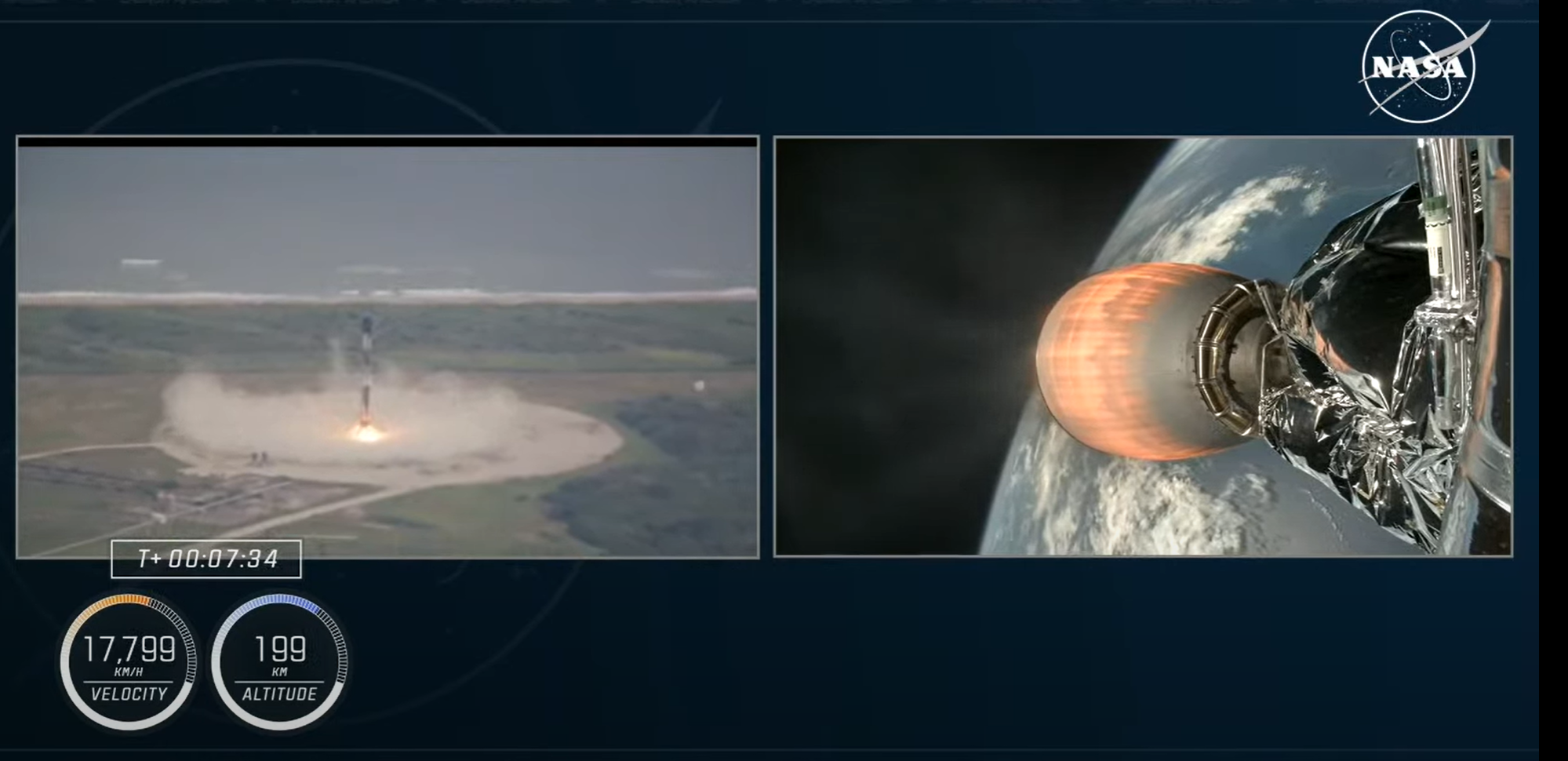
The first stage of the SpaceX Falcon 9 rocket has completed its descent and landed at the company’s Landing Zone 1 at Cape Canaveral Space Force Station in Florida.
Next, the Dragon spacecraft will separate from the rocket’s second stage to continue its journey to the International Space Station.
Falcon 9 Max Q, Main Engine Cutoff, Stage Separation
SpaceX’s Falcon 9 rocket has reached Max-Q, the moment of peak mechanical stress on the rocket. Following this, first stage main engine cutoff occurred, and the first and second stages have separated from each other.
The rocket’s first stage booster is scheduled to land at SpaceX’s Landing Zone 1 at Cape Canaveral Space Force Station in Florida.
Next, the Falcon 9’s second-stage engine will ignite to carry Crew-9 and the Dragon spacecraft closer to orbit.
Liftoff! NASA’s SpaceX Crew-9 Heads to Space Station
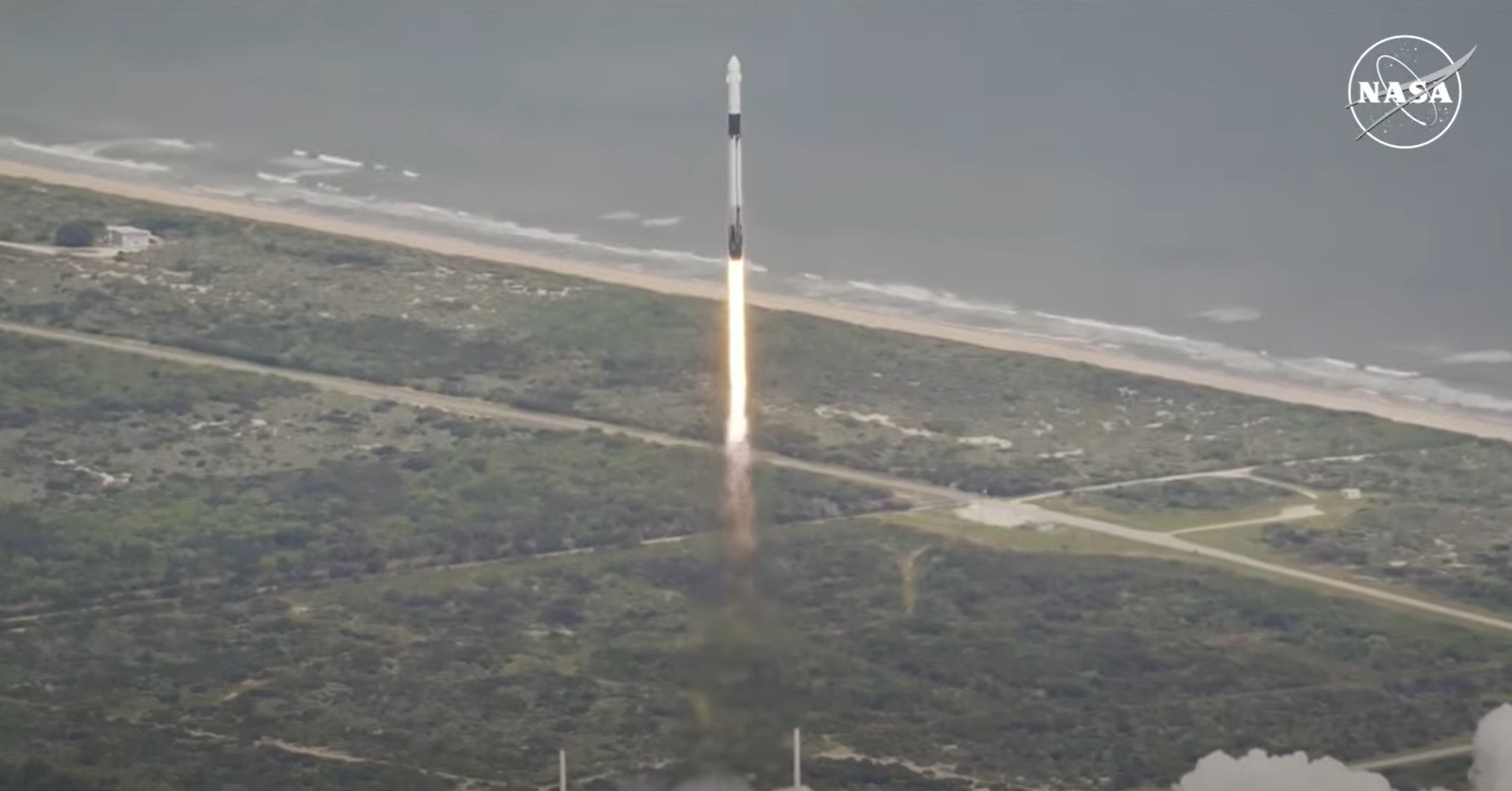
NASA’s SpaceX Crew-9 mission lifted off at 1:17 p.m. EDT from Space Launch Complex-40 at Cape Canaveral Space Force Station in Florida. This marks the first time a human spaceflight mission launched from the pad.
NASA astronaut Nick Hague and Roscosmos cosmonaut Aleksandr Gorbunov are already experiencing 2 g while SpaceX’s Dragon spacecraft and Falcon 9 rocket go through a rapid succession of events.
It is expected to take 28.5 hours for the spacecraft to autonomously dock to the space station at 5:30 p.m. EDT Sunday, Sept. 29, while traveling 17,000 mph orbiting the Earth.
Coming up next, the nine Merlin engines on Falcon 9’s first stage will burn through one million pounds of propellant during the next three minutes.
NASA’s live coverage continues on NASA+ and the agency’s website. Also, check back for updates on the mission blog, @commercial_crew on X, or commercial crew on Facebook.
Propellant and Liquid Oxygen Loading Begins
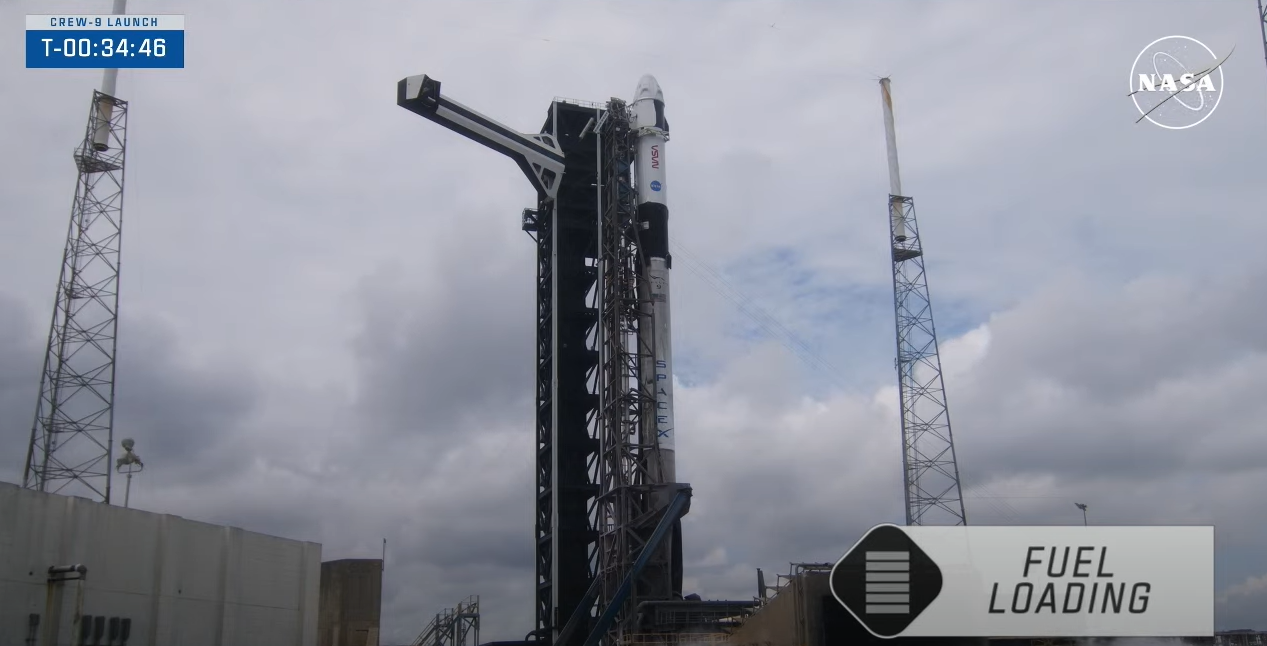
The SpaceX Falcon 9 rocket fueling is underway with rocket-grade kerosene (RP-1) and first-stage liquid oxygen. About 16 minutes before liftoff, liquid oxygen fueling will begin for the second stage.
Liftoff is the next big milestone! Launch weather officers with the U.S. Space Force 45th Weather Squadron predict a 70% chance of favorable weather conditions for launch.
Liftoff remains scheduled for 1:17 p.m. EDT from Space Launch Complex-40 at Cape Canaveral Space Force Station in Florida.
Crew Access Arm Retracts

The launch director just gave a “go” for the crew access arm to retract away from SpaceX’s Dragon spacecraft and Falcon 9 rocket.
A few minutes later, Dragon’s launch escape system will be armed to allow the Crew-9 crew members to escape safely in the unlikely event of an anomaly from the moment the SpaceX Falcon 9 rocket lifts off until the Dragon spacecraft reaches orbit.
Propellant loading is coming up next.
Liftoff One Hour Away for NASA’s SpaceX Crew-9 Launch
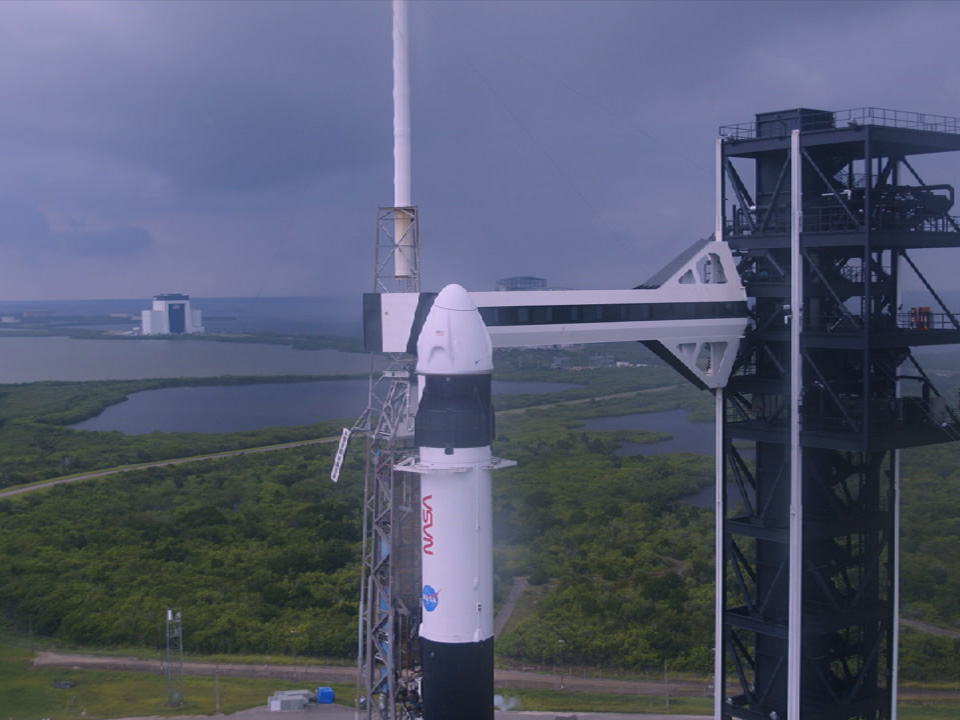
The SpaceX closeout team has left the crew access arm, which will soon retract from the Dragon spacecraft. Launch, set for 1:17 p.m. EDT, is now less than an hour away.
Launch weather officers with the U.S. Space Force’s 45th Weather Squadron are watching lightning, rain, and wind in the area, but launch currently remains a “go” for liftoff from Space Launch Complex-40 at Cape Canaveral Space Force Station.
It will take 28.5 hours for NASA astronaut Nick Hague, commander, and Roscosmos cosmonaut Aleksandr Gorbunov, mission specialist, to reach the International Space Station and dock to the Harmony module’s forward port. Once there, they’ll be greeted by nine members of the Expedition 72 crew. There will be a brief handover period before NASA’s SpaceX Crew-8 members, NASA astronauts Matthew Dominick, Mike Barratt, and Jeanette Epps, as well as Roscosmos cosmonaut Alexander Grebenkin return to Earth. The four-person crew has been at the orbiting laboratory since March 5, when they docked to the orbital outpost aboard the SpaceX Dragon Endeavour spacecraft.
The space station will be traveling over northeast Bulgaria during liftoff.
NASA’s live coverage of the Crew-9 mission continues on NASA+ and the agency’s website. Also, check back for updates on the mission blog, @commercial_crew on X, or commercial crew on Facebook.
NASA’s SpaceX Crew-9 Mission to Perform Science Experiments
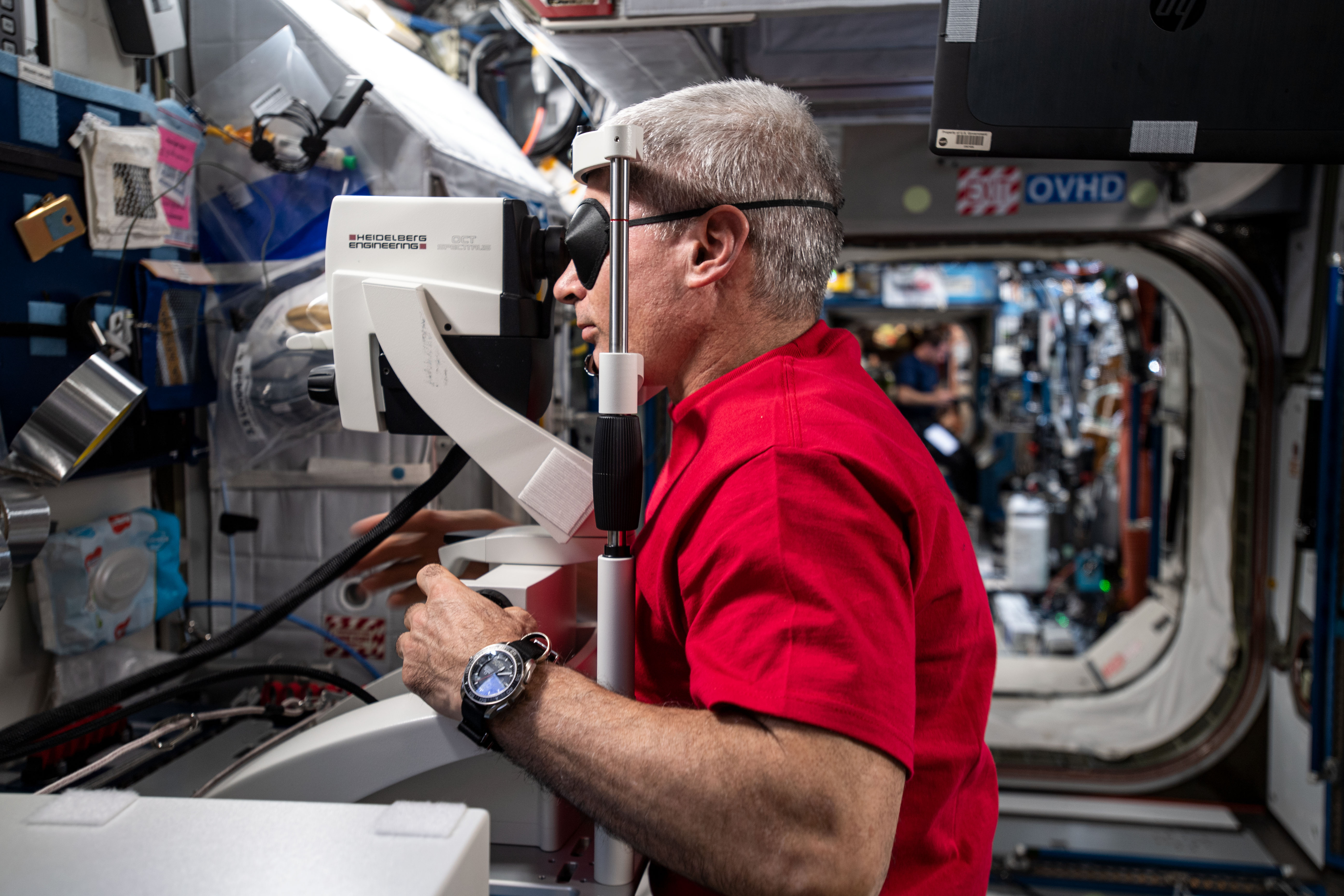
NASA astronaut Nick Hague and Roscosmos cosmonaut Aleksandr Gorbunov will be busy during their roughly five-month mission at the International Space Station.
The Crew-9 members will conduct more than 200 science investigations involving blood clotting studies, moisture effects on plants grown in space, and vision changes in astronauts.
Researchers want to determine how environmental conditions affect platelets and megakaryocytes, which are large cells found in bone marrow. Both play important roles in blood clotting and immune response, and the results could provide answers for humans in space and here on Earth.
The crew also will study the vision changes that often occur while astronauts are in orbit and if a daily vitamin B supplement will make a difference. It’s still unknown why some astronauts experience vision changes and others do not, but researchers have been studying it for years.
Members of Crew-9 will participate in a spacewalk to repair a telescope attached to the outside of the space station.
Hague and Gorbunov are scheduled to launch to the space station at 1:17 p.m. EDT aboard a SpaceX Dragon spacecraft and Falcon 9 rocket from Space Launch Complex-40 at Cape Canaveral Space Force Station in Florida.
